Mechanisms of miR-3189-3p-mediated inhibition of c-MYC translation in triple negative breast cancer
- PMID: 35642054
- PMCID: PMC9158314
- DOI: 10.1186/s12935-022-02620-z
Mechanisms of miR-3189-3p-mediated inhibition of c-MYC translation in triple negative breast cancer
Abstract
Background: Triple negative breast cancer (TNBC) is an aggressive subtype of breast cancer characterized by the lack of estrogen receptor, progesterone receptor, and HER2. Our lab previously characterized miR-3189-3p as a microRNA with potent anti-cancer activity against glioblastoma. Here, we hypothesized a similar activity in TNBC cells. As miR-3189-3p is predicted to target a variety of RNA binding proteins, we further hypothesized an inhibitory effect of this miRNA on protein synthesis.
Methods: MDA-MB-231 and MDA-MB-468 cells were used to investigate the effect of miR-3189-3p on cell proliferation, migration, and invasion. TGCA database was used to analyze the expression of miR-3189-3p, c-MYC, 4EPB1, and eIF4E in breast cancer. Western blotting and RT-qPCR assays were used to assess the expression of selected proteins and RNAs after transfections.
Results: Although c-MYC is not a predicted gene target for miR-3189-3p, we discovered that c-MYC protein is downregulated in miRNA-treated TNBC cells. We found that the downregulation of c-MYC by miR-3189-3p occurs in both normal growth conditions and in the absence of serum. The mechanism involved the direct inhibition of eIF4EBP1 by miR-3189-3p. Additionally, we found that miR-3189-3p could negatively affect cap-independent translation mediated by internal ribosome entry sites (IRES) or by m6A. Finally, miR-3189-3p sensitized TNBC cells to doxorubicin.
Conclusion: Overall, results indicated that miR-3189-3p exerts its anti-tumor activity through targeting translational regulatory proteins leading to an impairment in c-MYC translation, and possibly other oncogenic factors, suggesting that miR-3189-3p, alone or in combination, could be a valuable therapeutic approach against a malignancy with few treatment options.
Keywords: 4EBP1; Breast cancer; Translation; c-MYC; miR-3189-3p.
© 2022. The Author(s).
Conflict of interest statement
The authors declare no conflicts of interest.
Figures

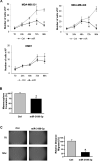
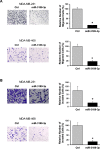
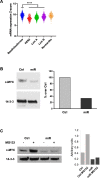
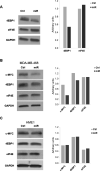

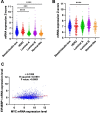

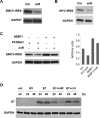

References
Grants and funding
LinkOut - more resources
Full Text Sources
Research Materials
Miscellaneous

